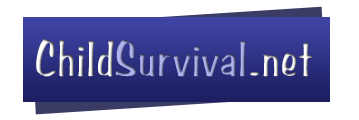Effect of donor funding for immunization from GAVI and other channels on vaccine coverge
| Saturday, 9th of November 2019 |
|
Effect of donor funding for immunization from Gavi and other development assistance channels on vaccine coverage: Evidence from 120 low and middle income recipient countries
Author links open overlay panelGloriaIkileziaOrvalho J.AugustobJoseph L.DielemanaKennethSherrbStephen S.Lima
a
Institute for Health Metrics and Evaluation, University of Washington, 2301 5th Avenue, Suite 600, Seattle, WA 98121, USA
b
Department of Global Health, University of Washington, Harris Hydraulics Laboratory, Box 357965, Seattle, WA 98195, USA
Received 11 December 2018, Revised 29 August 2019, Accepted 21 October 2019, Available online 1 November 2019.
Show less
https://doi.org/10.1016/j.vaccine.2019.10.057Get rights and content
Under a Creative Commons license
open access
Abstract
Donor assistance for immunization has remained resilient with increased resource mobilization efforts in recent years to achieve current global coverage targets. As a result, more countries continue to introduce new vaccines while optimizing coverage for traditional vaccines. Gavi the Vaccine Alliance has been at the forefront of immunization support specifically among low and middle income countries, alongside other channels of development assistance which continue to play a vital role in immunization.
Using available recipient country level data from 1996 to 2016, we estimate the impact of Gavi support for vaccines and health systems strengthening on vaccine coverage for 3 dose DPT, 3 dose pneumococcal conjugate vaccine, 3 dose pentavalent, 2 dose measles and 2 dose rotavirus vaccines. We investigate the same effects of total aid for immunization from other channels of development assistance. Standard time series cross sectional analysis methods are applied to investigate the effects of vaccine support controlling for country income, governance and population, with robustness tests implemented using different model specifications. Double counting was eliminated and results are presented in real 2017 US dollars.
We found significant positive effects of aid particularly among the newer vaccines. Using 2016 country specific disbursements and coverage levels as baseline, we estimated that among recipient countries below the universal target, additional DAH per capita required to reach 90%, ranged from 0.01USD to 4.33USD for PCV, 0.03USD to 9.06USD for pentavalent vaccine and 0.01USD to 2.57USD for rotavirus vaccine. The estimated number of children vaccinated through 2016, attributable to Gavi support totaled 46.6million, 75.2million and 12.3million for PCV, pentavalent and rotavirus vaccines respectively.
Our analysis suggests substantial success both from a historical and prospective perspective in the implementation of global immunization initiatives thus far. As more vaccines are rolled out and countries transition from donor aid, strategies for fiscal sustainability and efficiency need to be strengthened in order to achieve universal immunization coverage.
https://www.sciencedirect.com/science/article/pii/S0264410X19314379?via%3Dihub
| Are three drugs for malaria better than two?
Friday, 24th of April 2020 |
| Public health Interventions and epidemic intensity during the 1918 influenza pandemic
Thursday, 16th of April 2020 |
| Chloroquine and hydroxychloroquine as available weapons to fight COVID-19
Tuesday, 17th of March 2020 |
| Using models to shape measles control and elimination strategies in low- and middle-income countries: A review of recent applications
Monday, 17th of February 2020 |
| Immunization Agenda 2030
Tuesday, 11th of February 2020 |
 |
41809237 |
| www.measlesinitiative.org www.technet21.org www.polioeradication.org www.globalhealthlearning.org www.who.int/bulletin allianceformalariaprevention.com www.malariaworld.org http://www.panafrican-med-journal.com/ |
